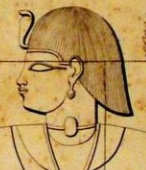Amantekha
In today's world, Amantekha has become a topic of great relevance and interest to a wide audience. With the advancement of technology and globalization, Amantekha has taken a fundamental role in our lives, impacting various aspects of society, culture and economy. Throughout history, Amantekha has been the subject of study, debate and controversy, generating conflicting opinions and strong emotions. This article aims to delve into the world of Amantekha, exploring its different dimensions and offering a comprehensive perspective that allows the reader to understand its importance and relevance in today's world.
| Amantekha | ||||||
|---|---|---|---|---|---|---|
 Amantekha as depicted in his tomb | ||||||
| Pharaoh | ||||||
| Reign | Second half of the third century BCE | |||||
| Predecessor | Amanislo (?) | |||||
| Successor | Shesepankhenamen Setepenre (?) | |||||
| ||||||
| Burial | Meroe, Beg. N 4 | |||||
Amantekha was a king of Kush, ruling from Meroë in the second half of the third century BCE. Amantekha is known only from his tomb, Beg. N 4, which although relatively small is also the earliest known tomb from Meroë's northern cemetery. The tomb and the decoration of its chapel are not well preserved. The king's name appears on blocks from the south wall of the pyramid chapel. The throne name Menibre is only partly preserved, so that other readings are possible too.
Amantekha is conventionally placed in the chronology of Kushite rulers as the successor of Amanislo and the predecessor of an unknown king who used the Horus name "Shesepankhenamen Setepenre".
References
- ^ László Török, The kingdom of Kush: handbook of the Napatan-Meroitic Civilization, 1997
- ^ a b Kuckertz, Josefine (2021). "Meroe and Egypt". UCLA Encyclopedia of Egyptology: 5.
- ^ a b László Török, Fontes Historiae Nubiorum, Vol. II, Bergen 1996, ISBN 8291626014, p. 570-571.
